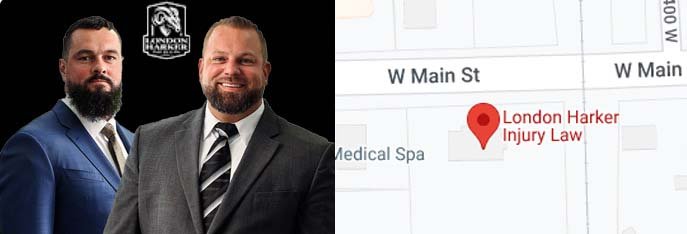Posted on Tuesday, December 5th, 2023 at 9:00 am

When you file a personal injury lawsuit in Utah, you may seek compensation for both economic and non-economic losses. Economic losses are losses resulting from physical injuries or illnesses that have objective financial values. Common economic losses in personal injury cases include medical bills and lost wages.
Non-economic losses don’t have clear dollar values. They may include such losses as emotional distress, loss of enjoyment of life, and pain and suffering,
If you are filing an insurance claim or lawsuit in Utah, you may wonder how to calculate pain and suffering damages. Legal professionals use a variety of methods in these circumstances. Two of the most common are the multiplier method and the per diem method.
Calculating Pain and Suffering Damages With the Multiplier Method
The multiplier method involves first adding up all your economic losses, such as medical expenses and lost wages. Legal professionals and insurance companies using the multiplier method assign a value between 1.5 and 5 to an injured party’s pain and suffering. This value is a “multiplier.”
The greater your pain and suffering, the greater the multiplier. Factors affecting how high or low a multiplier is include:
- The impact of your injuries on your quality of life
- How long it will likely take to recover from pain and suffering
- The overall severity of your pain and related non-economic losses
Remember, insurance companies want to settle personal injury cases for as little money as possible. The fact that an insurer assigned a low multiplier to your case doesn’t mean their calculations are accurate. You may need to negotiate with the insurance company if you believe the multiplier they’ve assigned to your pain and suffering is too low.
Once the parties calculating pain and suffering damages agree on a multiplier, they will multiply the sum of your economic losses by that value. The result is the total amount of compensation you may be eligible to receive.
Calculating Pain and Suffering Damages With the Per Diem Method
The per diem method involves less calculation than the multiplier method. With the per diem method, those calculating pain and suffering damages assign a daily dollar value to your pain and suffering. The simplest way to determine this daily dollar value is to simply use how much you would make in a day of work.
The per diem method requires determining how many days you endured pain and suffering. Multiply the number of days you experienced pain by the daily value assigned to your pain to determine how much compensation you may receive.
Which Method Should You Use to Calculate Pain and Suffering Damages?
One of the above methods may be more appropriate than the other depending on the nature of your injuries. For example, perhaps you’ve sustained serious injuries that will leave you with long-term pain.
The per diem method may not be ideal in these circumstances. Because you don’t know how many days your pain will last, you’re missing a significant part of the per diem equation.
That said, it’s wise to calculate pain and suffering damages before entering into negotiations with an insurance company using both equations. Doing so will at least give you a general sense of how much compensation your pain and suffering may be worth. This ensures you’re negotiating from an informed position.
Documentation of Pain and Suffering in a Personal Injury Case

Negotiating for fair pain and suffering compensation may be easier when you have documentation supporting your claim. Documentation and evidence in your case may take the form of:
- Medical records
- Testimony from medical professionals
- Testimony from those who have observed the impact of pain on your quality of life, such as family members and friends
- Pain journals or pain logs, in which you describe your pain and how it affects you
- Photos and/or videos illustrating how pain affects your daily life
- Prescriptions for pain medications or other records of pain treatment
That’s not necessarily an exhaustive list. Other types of evidence may help you prove pain and suffering, depending on the specific nature of your case.
Contact a Utah Personal Injury Attorney
Knowing what type of evidence you need to prove pain and suffering – and gathering that evidence for a claim or lawsuit – can be challenging if you lack experience in these areas. So can calculating your pain and suffering damages.
These aren’t tasks you need to handle on your own. At London Harker Injury Law, our Utah personal injury lawyers can handle these tasks on your behalf while you focus on recovering from injuries. Get started today by contacting us online or calling us at (772) 272-7274 for a free case review.
Taxes on Lawsuit Settlements and Awards in Utah



